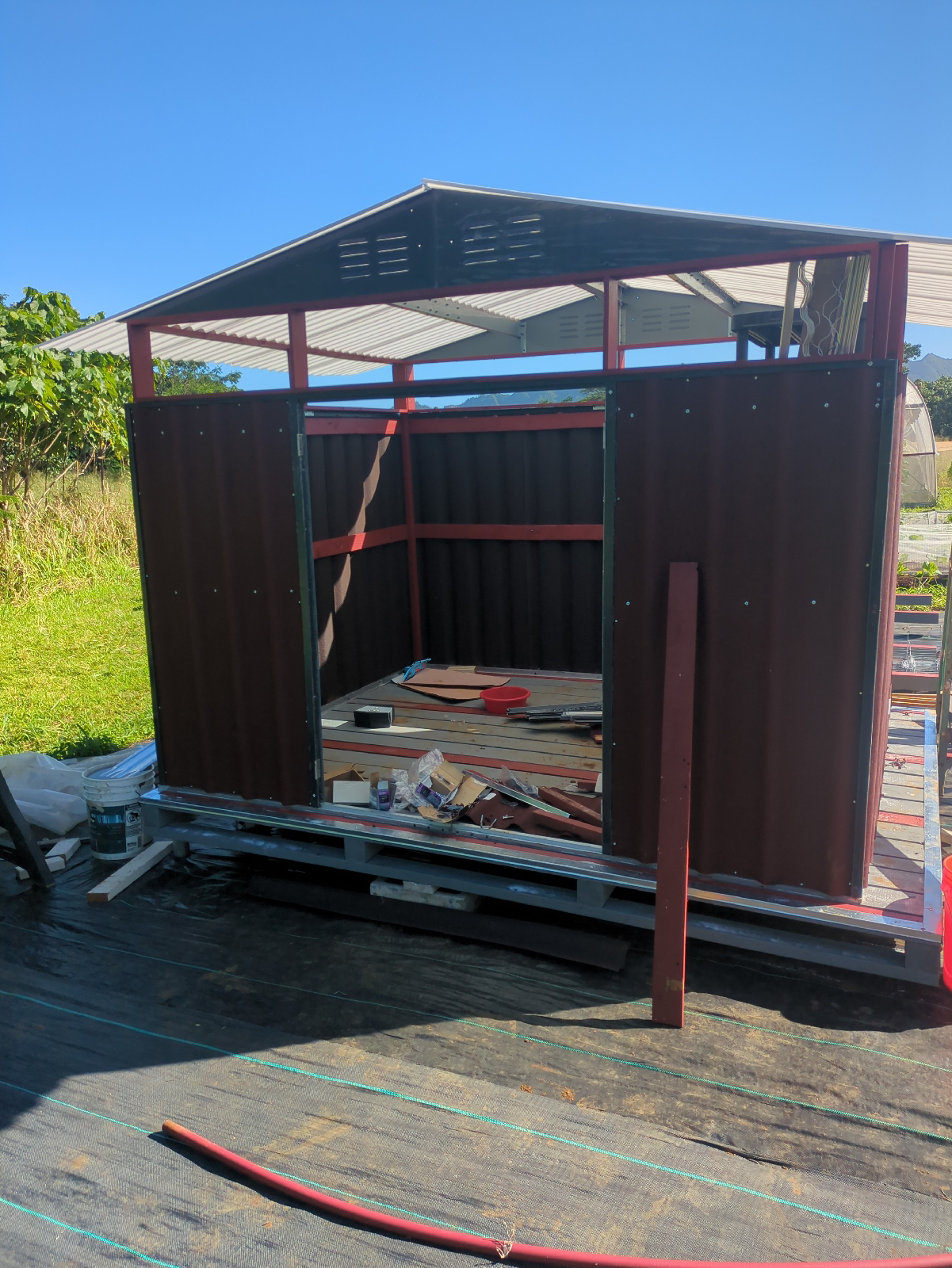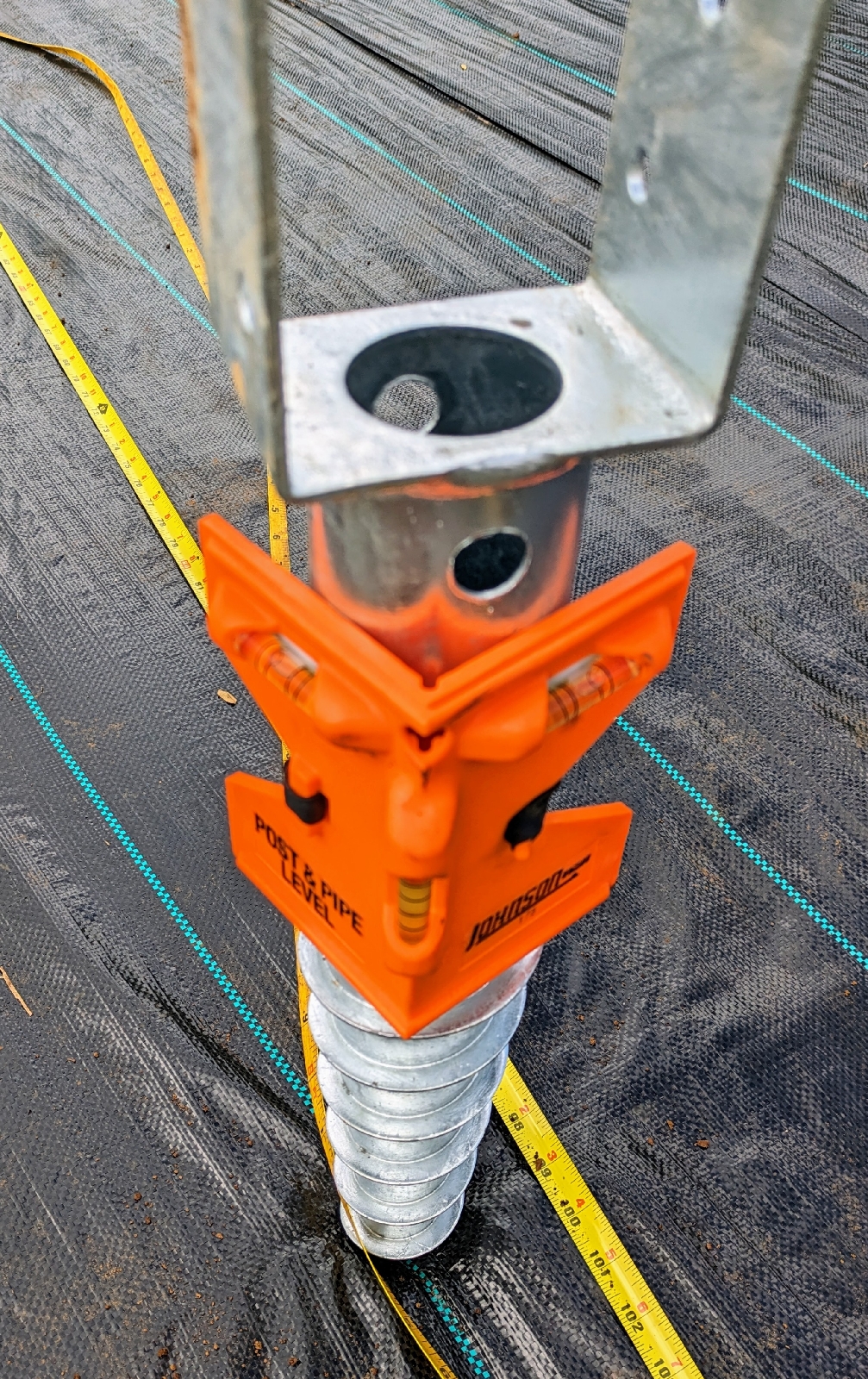Sturm und drang, mostly sturm and new site

Winds tore through our hoop houses and tore them mostly to shreds. We were just getting ready to transition to a new site in Waimea and this event added a new urgency to move the schedule up. The new greenhouse with...renovations. Kenji strapping down the blown out side of our big greenhouse The Waimea site had already existing greenhouses, some with covers and some not. We leased two of them, each 96 feet x 30 feet and 20 feet tall. Old irrigation was also in place making repairs and upgrades not too hard. Water pressure was also great so no need for pumping. The new greenhouse in Waimea. This one had plastic in place already. Solar panels are moved from the Lī huʻe site. Kenji screwing in the post based. the ground is rock hard here so we used a small auger to drill holes. Setting up greenhouse two for plastic installation. Greenhouse two was full of desiccated tomato plants and weeds. Much cleaning. Corteva, our landlords, provided a dumpster to help. Super helpful...





